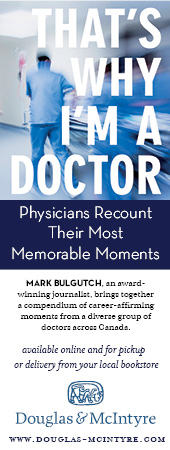Give peas a chance
Dan Jason's The Power of Pulses is a guide to growing and eating pulses, coincidental with the United Nations’ International Year of Pulses.
February 02nd, 2016

Dan Jason (above) has been popularizing beans as earth-friendly food since the early 1970s.
Pulses is a term for chickpeas, favas, peas, lentils and beans.
As one of the forefathers of ecological awareness in B.C., Dan Jason has roots and tendrils in B.C. publishing that go deep. And with his new book on pulses, he remains on the cutting edge.
Jason first broke new ground with Your Own Food (Intermedia 1972), followed soon thereafter by a now-hard-to-find bestseller Some Useful Wild Plants for Nourishment and Healing (Talonbooks 1974, 1975), co-authored by Nancy Jason and Tom Perry. What began as a project to record some edible and medicinal plants of the Slocan Valley grew into a larger compendium with sections about herbs of southern B.C., trees, berries, seaweeds and poisonous plants.
It was during those post-Woodstock early 1970s that the back-to-land movement started getting serious in B.C. Coincidentally a young Mayne Islander named Vic Marks, a former editor of B.C. Access Catalogue, produced a practical hippie bible for rural living, Cloudburst: A Handbook of Rural Skills and Technology (1973). We were stardust, we were golden, and we had to get ourselves back to the garden.
In 1976, Jason moved to Salt Spring Island and started to grow large gardens. He created the mail-order seed company Salt Spring Seeds in 1986, initially selling packets of a dozen bean varieties, as well as quinoa and amaranth. Jason continues to grow much of the food his family eats and he now sells more than 700 different herbs, vegetables, beans, grains and flowers.
Co-authored with fifty recipes from the foodie-sister team of Hilary Malone and Alison Malone Eathorne, Dan Jason’s The Power of Pulses (Harbour 2016) is an informative and inspirational guide to growing and eating pulses that coincides with the United Nations’ International Year of Pulses.
In world where the environmental costs of sustaining meat-based diets have given rise to movements such as Meatless Monday, pulses are now being touted as a earth-saving substitute for meat or tofu as a source of protein.
Both Rubin’s book and the U.N. declaration are devoted to promoting the nutritional and environmental benefits of pulses which are rich in fibre, high in vitamin B, and remarkably low on the glycemic index—helping to reduce the risk of diabetes, heart disease and other chronic illness.
Pulses are gluten-free and ideal for grind-your-own flour for non-gluten breads and baking. Perhaps best of all for the planet, self-fertilizing pulses use half of the non-renewable energy compared to most other crops.
“While the ecological and health benefits of cutting down on meat consumption are widely known, not all meat-replacements are created equal,” we are told.
“Soy products have long been a staple of vegetarian diets, but soybeans are often grown in pesticide-heavy monocultures, processed in factories and shipped long distances.
“By contrast, pulses are easy on the environment: versatile in their unprocessed state, needing no refrigeration and little packaging, and many are a snap to grow organically, even for new gardeners.
“In addition to being easy to grow at home, millions of tonnes of pulses are commercially harvested across North America, making them an ideal daily food for locavores.”
Vegetarian recipes include Black Bean Brownies with Espresso Ganache; Broad Bean Succotash with Fresh Ricotta & Poached Eggs on Toast; and Crispy Chickpea Power Bowl with Kale, Quinoa & Dukkah Crunch.
Having enjoyed gardening since his childhood in Montreal, Jason graduated from McGill with a degree in Anthropology in 1967. Jason has since developed his own Black Jet soybean variety and now specializes in seeds for high-protein plants.
He has been President of the Seed and Plant Sanctuary for Canada since 2002, a national network of organic growers dedicated to preserving heirloom seeds, and he has written several other books including Greening the Garden, a guide to sustainable organic growing, and a children’s book, Once Upon A Time I Love You, illustrated by his daughter Zama, in 1972.
“My biggest surprise as a seedsman was to learn just a few years ago that Canada has become the world’s largest exporter of dried peas and beans, chickpeas, favas and lentils,” he says.
“Other countries love our pulses but we consume less than ten percent of what we cultivate.
“I’ve dedicated myself to popularizing beans as something we North Americans should be growing and eating. In the context of climate change, beans have some very powerful things to say!”
BOOKS:
Your Own Food (Intermedia 1972)
Once Upon A Time I Love You (Intermedia 1972)
Some Useful Wild Plants for Nourishment and Healing (Talonbooks 1974, 1975), co-authored by Nancy Jason and Tom Perry
Greening the Garden, New Society Publishers, 1991
The Really Whole Food Cookbook (Harbour 1994).
Living Lightly on the Land, 1998
Whole Organic Food Book (Raincoast Books, 2001)
Saving Seeds As If Our Lives Depended On It (2006)
The Power of Pulses (Harbour 2016), co-authored with Hilary Malone and Alison Malone Eathorne. Photos by Christina Symons & others. $24.95 978-1-77162-102-1






I have already edited, in my head, my comment. Please adjust this sentence as indicated here: “My best source of new ideas for cooking/eating pulses came from a book I bought in Saskatchewan in 1986, published in order to promote the use by Canadians of pulse crops.”
I look forward to buying this book. My best source of new ideas for cooking/eating pulses came from a book I bought in Saskatchewan in 1986 in order to promote the use by Canadians of pulse crops. I’m surprised Mr. Jason was not aware of the extent of the Canadian harvest and its market, but I’m glad the Gulf Islands and the prairies now have a strong mutual interest.
Anne Edwards.